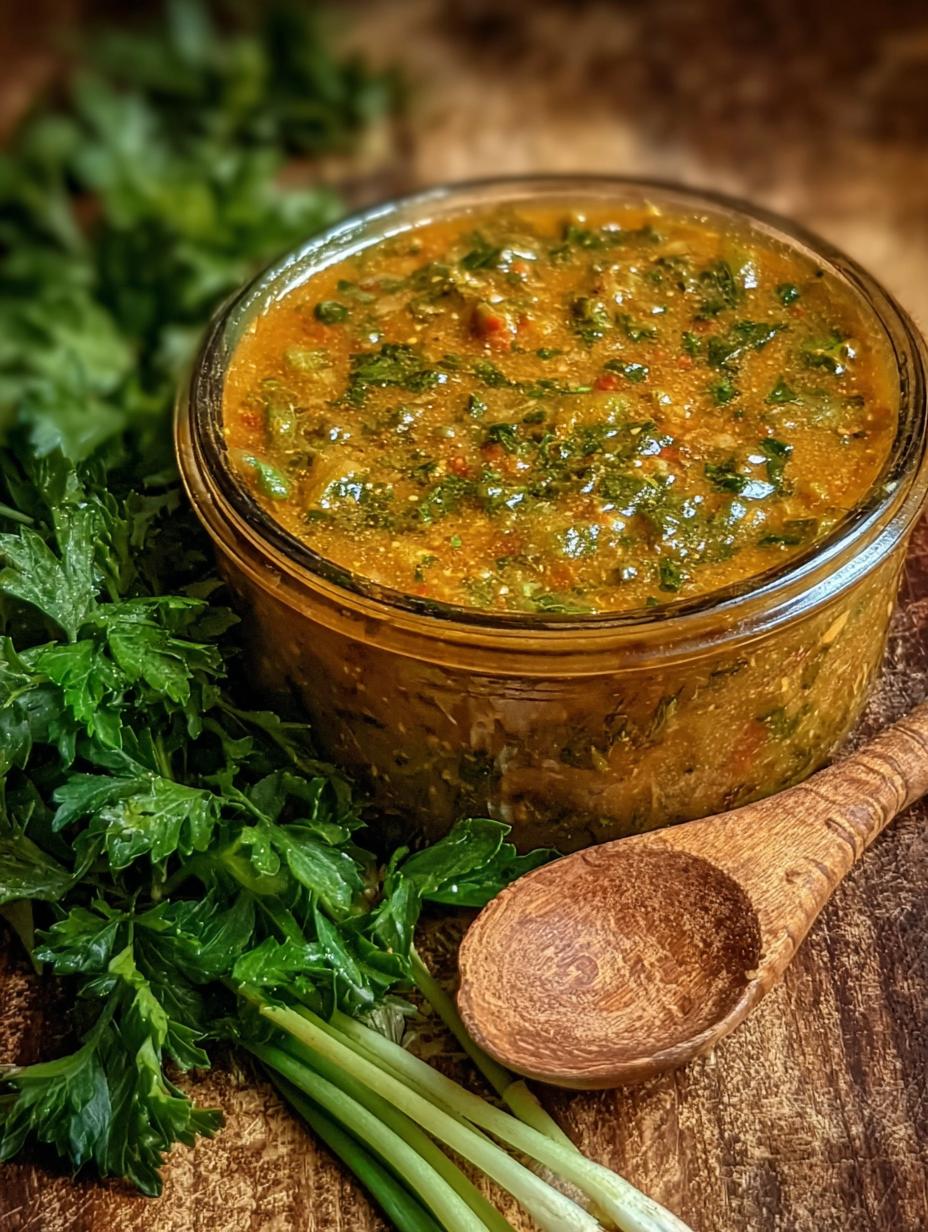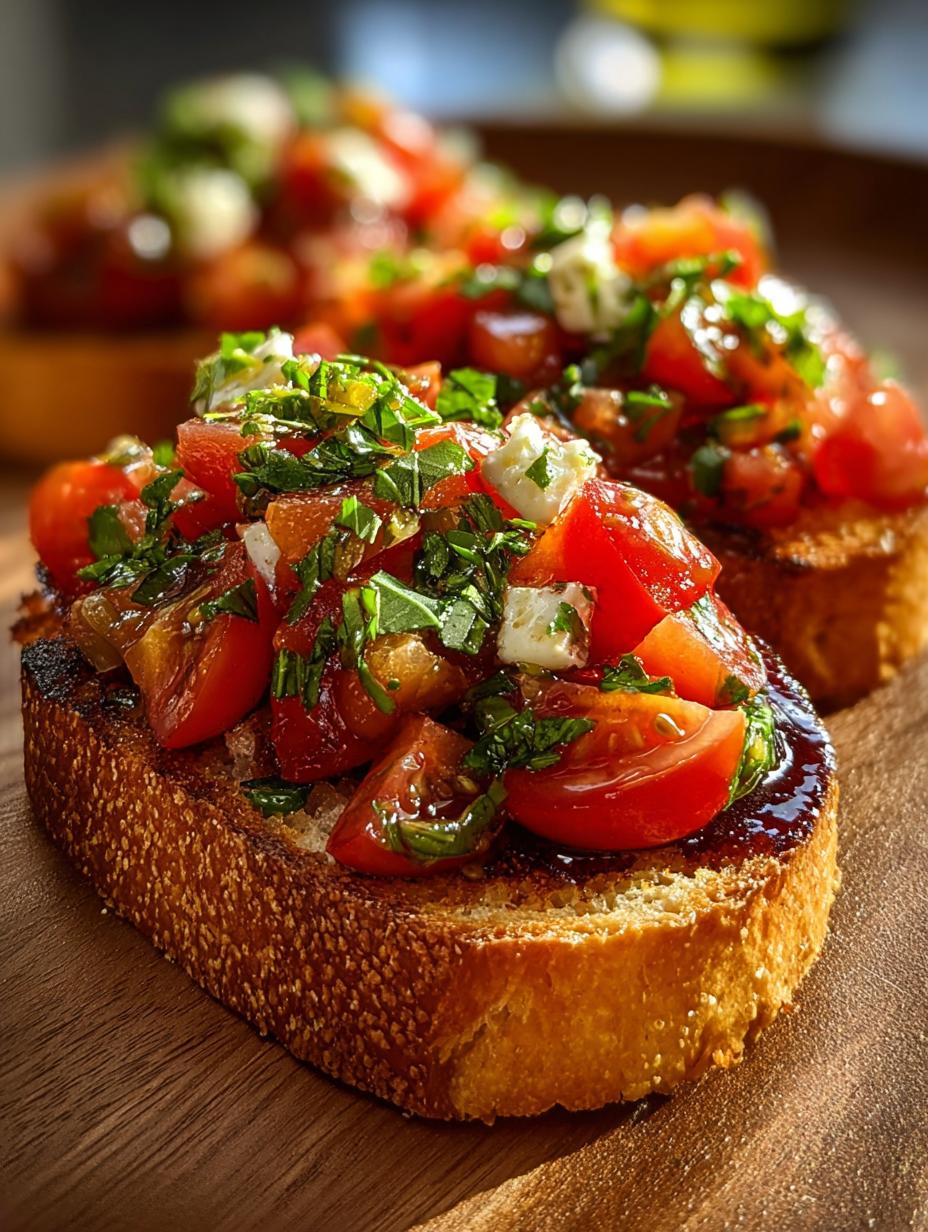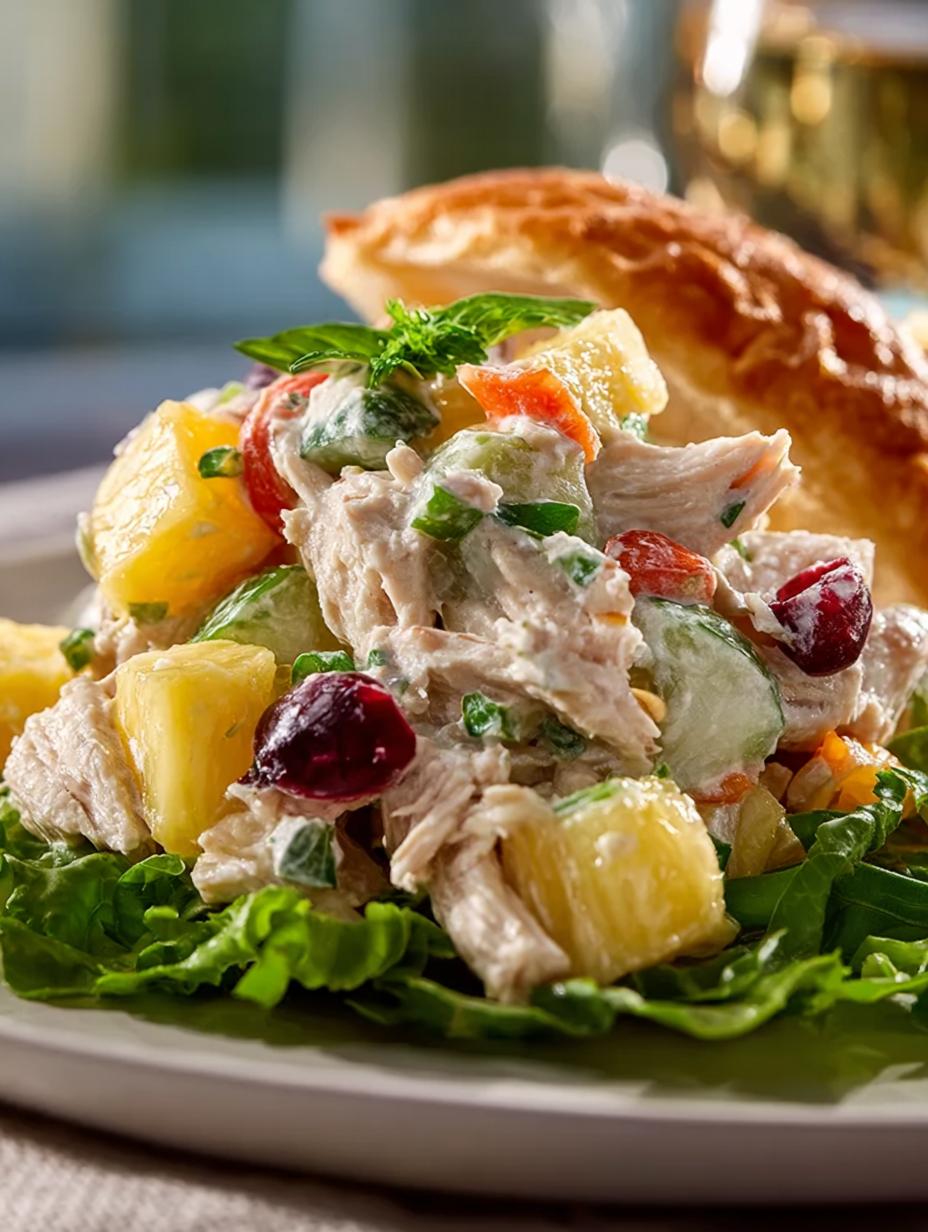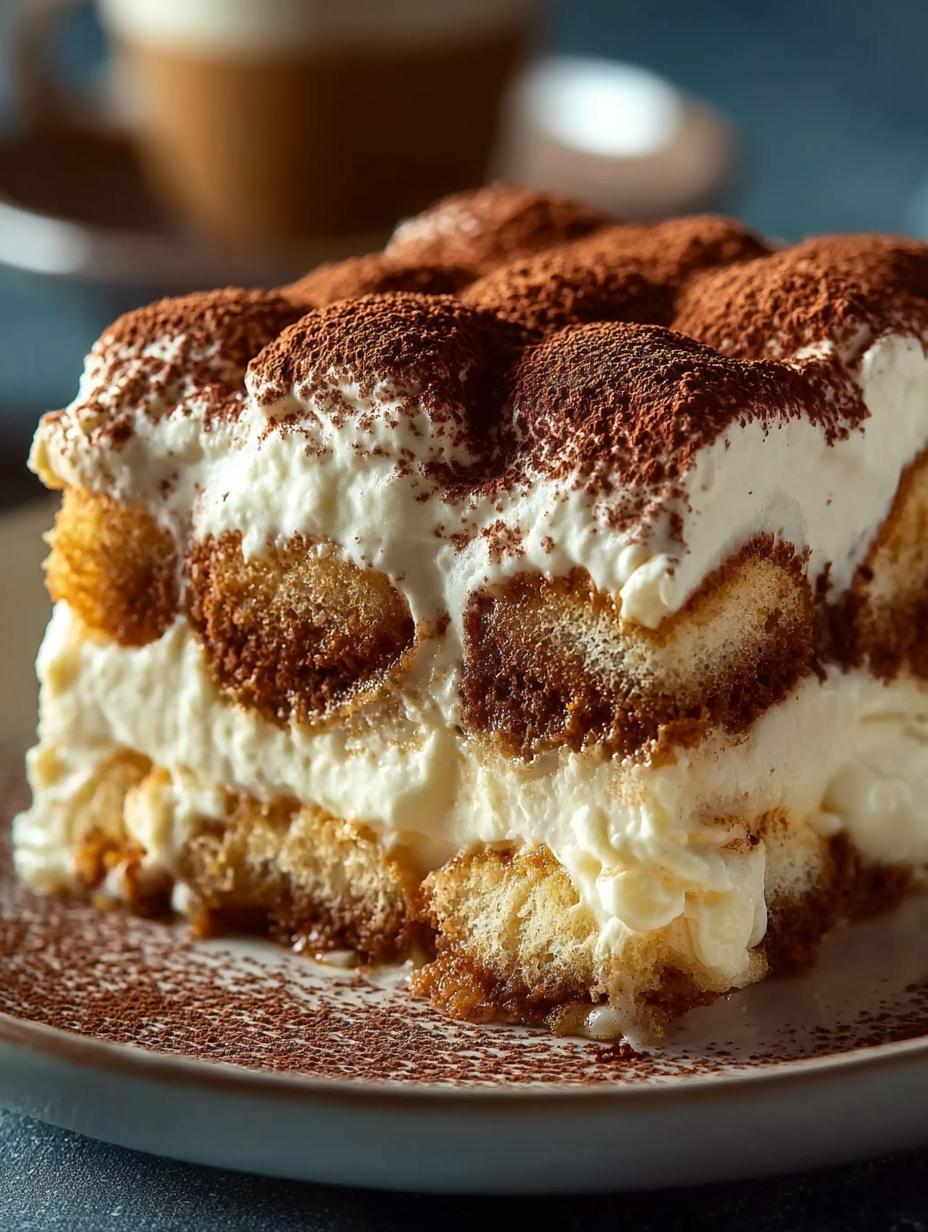Haitian epis has been my secret weapon in the kitchen for years, transforming simple ingredients into flavor-packed meals. I remember the first time I smelled it simmering – a fragrant cloud of garlic, herbs, and a hint of spice that instantly transported me to Haiti. This vibrant green seasoning paste is the heart and soul of so many traditional dishes, and I’m so excited to share my easy Haitian epis recipe with you. It’s incredibly versatile, acting as the perfect base for everything from tender chicken to savory stews. Let’s get cooking!
What is Haitian epis?
So, what exactly is Haitian epis? It’s a foundational seasoning paste, a vibrant green flavor bomb that is absolutely essential in traditional Haitian cooking. Think of it as the aromatic soul of many classic Caribbean dishes. This versatile concoction, often referred to as Haitian green seasoning, is built upon a base of fresh herbs, garlic, onions, and peppers. Its significance in Haitian cuisine cannot be overstated; it’s the go-to flavor base for everything from slow-cooked stews and rich rice dishes to marinades for meats like chicken and pork.
Why You’ll Love This Homemade Haitian Epis
Get ready to elevate your cooking with this incredible Haitian epis! Here’s why it’s a game-changer:
- Bold Authentic Flavor: Experience the true taste of Haiti with this vibrant, herbaceous seasoning.
- Incredibly Versatile: Use it as a marinade for chicken, a base for stews, or a flavor booster for rice.
- Super Easy to Make: My easy Haitian epis recipe comes together in minutes with just a blender.
- Unbeatable Freshness: Made with fresh herbs and aromatics, it tastes so much better than store-bought.
- Foundation for Classics: It’s the essential flavor base for dishes like griot and black bean rice.
- Customizable Heat: Easily adjust the spice level to create your perfect spicy Haitian epis or a milder version.
- Long-Lasting: Properly stored, this homemade Haitian epis keeps your kitchen smelling amazing for weeks.
Haitian Epis Ingredients
Making this Haitian epis recipe from scratch is so rewarding! Here’s what you’ll need to create this essential Haitian cooking base:
- 1 large green bell pepper, roughly chopped – This gives our epis its signature vibrant green color and a fresh, slightly sweet flavor.
- 1 small red bell pepper, chopped – Adds a more sweetness and a hint of color.
- 1 bunch green onions (scallions), chopped – Provides a mild oniony bite and fresh herbaceousness.
- 1 medium yellow onion, chopped – Forms a crucial aromatic base, offering a more pungent flavor than green onions.
- 8-10 garlic cloves, peeled – Garlic is non-negotiable for that deep, savory flavor that defines epis.
- 1 cup fresh parsley leaves, stems removed – This is key for that bright, fresh, and aromatic quality.
- 1 tablespoon fresh thyme leaves (or 1 teaspoon dried thyme) – Thyme adds an earthy, slightly floral note that complements the other herbs beautifully.
- 1 bouillon cube (optional) – Adds an extra layer of savory depth if you like.
- 1 Scotch bonnet pepper, seeds removed (optional) – For a kick of heat! Remove seeds and membranes to control the spice for your Haitian epis.
- Juice of 1 lime (or 2 tablespoons white vinegar) – Acidity brightens all the flavors and acts as a mild preservative.
- 2-3 tablespoons olive oil or neutral oil – Helps everything blend into a smooth paste and adds richness.
- Salt and black pepper, to taste – Essential for bringing out all the other flavors.
- Water, as needed for blending – To achieve the perfect paste consistency.
Key Ingredient Spotlight
The magic of Haitian epis truly comes alive with its fresh ingredients. Those vibrant bell peppers, both green and red, lend a beautiful color and subtle sweetness. Fresh herbs like parsley and thyme are the aromatic heart, offering a complex fragrance that store-bought seasonings just can’t match. And for that signature warmth, the Scotch bonnet pepper (used carefully!) provides a delightful heat that makes this seasoning so addictive.
How to Make Haitian Epis
Making this Haitian epis is surprisingly simple, and the aroma that fills your kitchen is just incredible. It’s truly an easy Haitian epis recipe that yields amazing results. Let’s get this flavorful paste made!
- Step 1: First things first, give all your beautiful fresh herbs and vegetables a good rinse under cool water. Then, give them a rough chop. It doesn’t need to be perfect; the blender will do the hard work!
- Step 2: Now, let’s get blending! Add your chopped bell peppers, green onions, yellow onion, garlic cloves, parsley leaves, thyme, and the optional Scotch bonnet pepper to your blender or food processor.
- Step 3: Next, pour in the lime juice (or vinegar for preservation), the optional bouillon cube, your oil, and a good pinch of salt and black pepper.
- Step 4: Begin to pulse the mixture. Gradually add a little water, just a tablespoon at a time, as needed. You’re aiming for a smooth, thick paste – think the consistency of pesto or a thick sauce. Keep blending until you reach this perfect texture. The fragrant smell at this stage is divine!
- Step 5: Once blended, give it a taste. This is your chance to customize your Haitian epis! Does it need more salt? A bit more tang from the lime or vinegar? Adjust it until it sings to your palate.
- Step 6: Transfer your glorious homemade Haitian epis to a clean, airtight jar. For the best, most authentic flavor, let it chill in the refrigerator for at least 2 hours before using it in your cooking. This allows all those wonderful flavors to meld together beautifully.
Achieving the Perfect Consistency
The key to a great Haitian epis paste is the consistency. If it’s too thick, add water or oil a tablespoon at a time while blending until it reaches your desired smoothness. Too thin? Blend in a few more garlic cloves or herbs, or even a tablespoon of breadcrumbs. For more tips on creating amazing flavor bases, check out these easy homemade seasoning mix recipes.
Spice Level Adjustment
Want a truly spicy Haitian epis? Leave some or all of the seeds and membranes in your Scotch bonnet pepper. For a milder version, remove all seeds and membranes, or omit the pepper entirely. You can also add a pinch of cayenne pepper for controlled heat.
Pro Tips for the Best Haitian Epis
I’ve learned a few tricks over the years to make my Haitian epis absolutely perfect every single time. These tips are simple but make a huge difference in flavor and longevity.
- Always, always use the freshest herbs and vegetables you can find. This is non-negotiable for that vibrant, authentic taste.
- Don’t be afraid to taste and adjust the seasoning as you go. Balancing the salt, acidity, and heat is key to a truly delicious epis.
- Proper storage is crucial! This ensures your homemade seasoning stays fresh and flavorful for as long as possible.
- Consider freezing portions in ice cube trays for easy grab-and-go flavor bombs.
What’s the secret to perfect Haitian Epis?
The real secret to an amazing Haitian epis lies in using the freshest possible ingredients and perfectly balancing the flavors. Don’t skimp on the fresh herbs, garlic, and aromatics! Proper storage, as detailed below, is also part of what makes this the best Haitian epis recipe.
Can I make Haitian Epis ahead of time?
Absolutely! This is a fantastic make-ahead condiment. I often whip up a big batch on the weekend to have on hand for the week. It stays fresh in the refrigerator for up to two weeks, and you can even freeze it for up to three months.
How do I avoid common mistakes with Haitian Epis?
A common pitfall is using wilted or old herbs, which results in a dull flavor. Also, be mindful not to add too much liquid during blending; you want a thick paste, not a watery sauce. Finally, ensure your blender or food processor is powerful enough to create a smooth consistency without overworking it.
What is Epis Used For?
So, you’ve got this magical green paste – now what? The uses for Haitian epis are incredibly vast! It’s the aromatic foundation for so many beloved Haitian dishes. One of the most classic uses is for marinating and cooking epis for griot, the quintessential Haitian fried pork. You’ll also use it generously for flavoring chicken dishes, whether you’re roasting, stewing, or grilling. Don’t forget its role in rice dishes; a spoonful of epis stirred in while cooking makes plain rice extraordinary. Essentially, if you want to add that authentic, deep Haitian flavor to almost anything, reach for your epis!
Variations of Haitian Epis You Can Try
While the classic recipe is fantastic, you can easily adapt this versatile Haitian epis seasoning to suit your needs and preferences. Here are a few ideas to get you started:
- Vegan Haitian Epis: The base recipe is already wonderfully vegan! Simply ensure you use a vegan bouillon cube or omit it altogether. This makes it perfect for anyone looking for plant-based flavor boosters.
- Vegetarian Haitian Epis: Similar to the vegan version, this ensures no meat products are used. It’s a fantastic way to add depth to vegetarian stews, tofu marinades, or vegetable stir-fries.
- Spicy Kick: For those who love heat, don’t shy away from the Scotch bonnet pepper! You can leave in some seeds and membranes, or even add a small piece of a habanero for an extra fiery kick.
- Rich & Creamy: For a slightly different texture and richness, try substituting some of the olive oil with coconut oil. This adds a subtle tropical note that pairs beautifully with many Caribbean dishes.
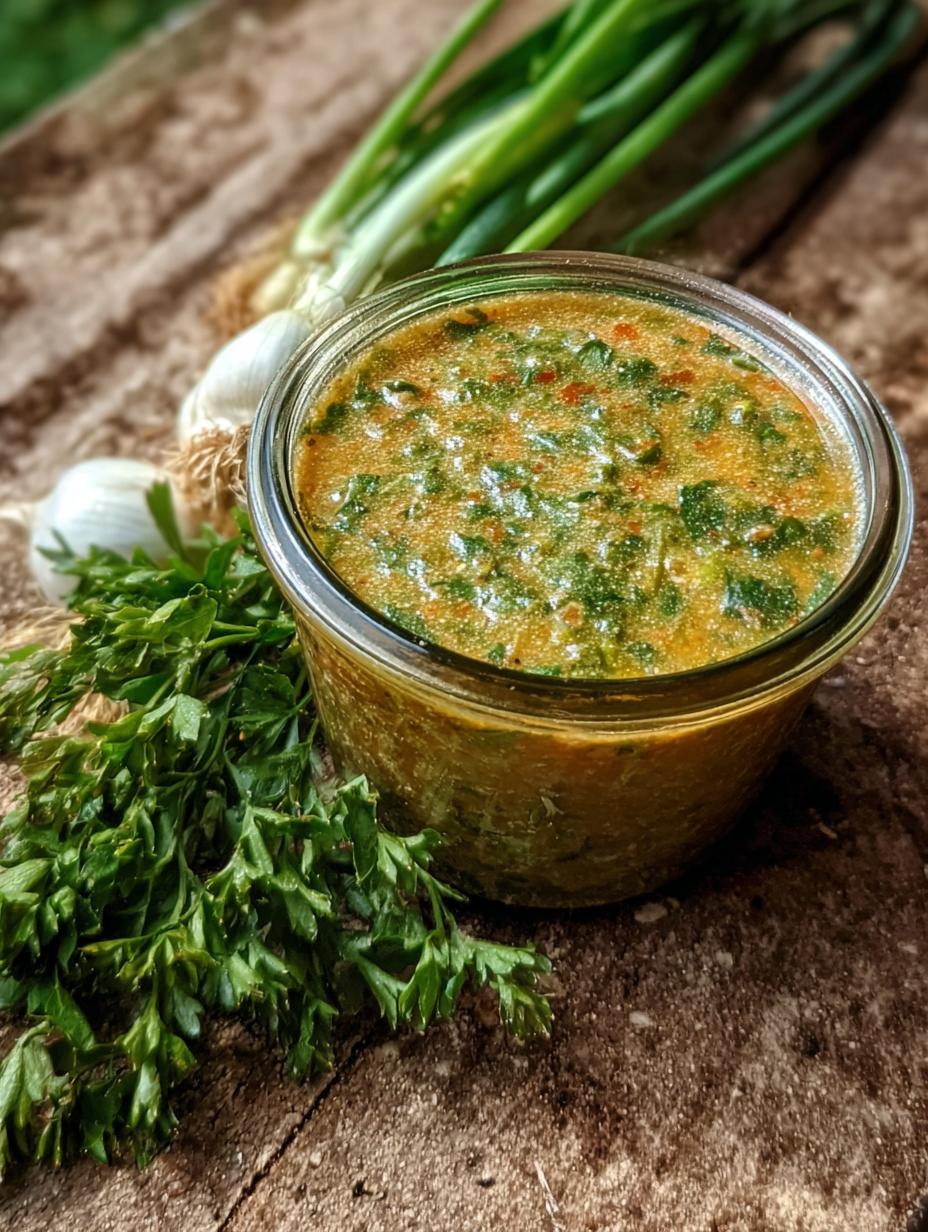
Storing and Reheating Haitian Epis
Once you’ve made this amazing homemade Haitian epis, keeping it fresh is key to enjoying its incredible flavor for weeks to come. After blending, let the epis cool completely before transferring it to an airtight container. I prefer using small glass jars, but any clean, sealed container will work. Stored this way in the refrigerator, your epis will stay vibrant and delicious for about two weeks. For longer storage, freeze it! Portioning it into ice cube trays is fantastic; once frozen, pop out the cubes and store them in a freezer bag for up to three months.
Reheating is simple. If using refrigerated epis, just scoop out what you need. If using frozen cubes, you can either thaw them overnight in the fridge or add them directly to your hot pan or pot when cooking. The flavor will still be wonderfully potent!
Frequently Asked Questions About Haitian Epis
What is the difference between Haitian epis and sofrito?
While both are foundational seasoning pastes in Caribbean and Latin cuisines, Haitian epis has a distinct flavor profile. Our version typically uses a blend of bell peppers, onions, garlic, and a generous amount of fresh herbs like parsley and thyme, often with a kick from Scotch bonnet peppers. Sofrito variations exist across cultures, but Haitian epis is particularly known for its vibrant green color and herbaceous aroma, making it a unique flavor base. For more information on different culinary traditions, you can explore resources on copycat recipes and their origins.
Can I make Haitian epis paste without Scotch bonnet peppers?
Absolutely! If you prefer a milder flavor or have sensitivities, you can easily omit the Scotch bonnet peppers. The epis will still be incredibly flavorful thanks to the fresh herbs, garlic, and onions. For a touch of heat without the Scotch bonnet, you could add a pinch of cayenne pepper or a small amount of jalapeño, adjusting to your taste.
How long does homemade Haitian epis last, and how should I store it?
This homemade Haitian epis is quite stable. When stored in an airtight container in the refrigerator, it typically lasts for about two weeks. The lime juice or vinegar in the recipe acts as a natural preservative. For longer storage, freezing is your best bet. Portioning it into ice cube trays makes it super convenient to use small amounts whenever needed. Frozen epis can last up to three months.
What’s the best way to use Haitian epis sauce in my cooking?
Think of this epis as your all-purpose flavor booster! It’s perfect as a marinade for meats like chicken, pork, or fish, adding incredible depth before cooking. Stir a tablespoon or two into stews, soups, or rice dishes during the cooking process to infuse them with authentic Haitian flavor. It also makes a fantastic base for sauces and gravies, or simply spread on toast! For ideas on using marinades, consider these quick honey lime chicken marinade recipes.
Print
Haitian Epis: Amazing Flavor Secret Unlocked
- Total Time: 15 minutes
- Yield: 2 cups 1x
- Diet: Vegan
Description
Homemade Haitian Epis is a vibrant green seasoning paste that brings bold, authentic flavor to Haitian cuisine. Made with fresh herbs, garlic, peppers, and spices, this all-purpose seasoning acts as the foundation for countless dishes—from stews and rice to marinades and soups. Once you make it, you’ll never cook without it again.
Ingredients
- 1 large green bell pepper, roughly chopped
- 1 small red bell pepper, chopped
- 1 bunch green onions (scallions), chopped
- 1 medium yellow onion, chopped
- 8–10 garlic cloves, peeled
- 1 cup fresh parsley leaves, stems removed
- 1 tablespoon fresh thyme leaves (or 1 teaspoon dried thyme)
- 1 bouillon cube (optional)
- 1 Scotch bonnet pepper, seeds removed (optional)
- Juice of 1 lime (or 2 tablespoons white vinegar)
- 2–3 tablespoons olive oil or neutral oil
- Salt and black pepper, to taste
- Water, as needed for blending
Instructions
- Rinse all herbs and vegetables thoroughly. Roughly chop them for easier blending.
- Combine bell peppers, scallions, onion, garlic, parsley, thyme, and Scotch bonnet pepper (if using) in a blender or food processor.
- Add lime juice or vinegar, bouillon (if using), salt, pepper, and oil.
- Pulse and gradually add water until the mixture forms a smooth but thick paste.
- Taste and tweak with more salt, vinegar, or oil as needed.
- Transfer epis to a clean jar, seal tightly, and refrigerate for at least 2 hours before using for best flavor.
Notes
- Use fresh herbs and vegetables for maximum flavor.
- Choose light-tasting oil to avoid overpowering the seasoning.
- Vinegar helps preserve epis longer; lime adds bright freshness.
- Refrigerate for up to 2 weeks or freeze up to 3 months in ice cube trays.
- Add extra parsley for green epis, more peppers for spicy epis, or coconut oil for richness.
- Use 1-2 tablespoons per pound of meat or per pot of stew.
- Prep Time: 15 minutes
- Cook Time: 0 minutes
- Category: Condiment
- Method: Blended
- Cuisine: Haitian
Nutrition
- Serving Size: 1 tablespoon
- Calories: 20
- Sugar: 0g
- Sodium: 75mg
- Fat: 2g
- Saturated Fat: 0g
- Unsaturated Fat: 2g
- Trans Fat: 0g
- Carbohydrates: 1g
- Fiber: 0g
- Protein: 0g
- Cholesterol: 0mg
Keywords: Haitian Epis, Homemade Haitian Seasoning, Haitian Green Seasoning, Haitian Marinade, Caribbean Sofrito, Haitian Cooking Base, Epis Paste, Haitian Recipes, Vegan Seasoning Paste, Caribbean Condiment
